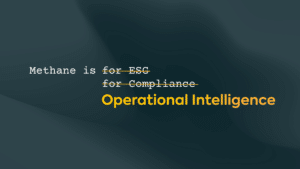NEW GHG INTENSITY VERIFICATION RULE
On July 20, 2023, the Colorado Air Quality Control Commission (AQCC) unanimously approved a new greenhouse gas intensity (GHG) verification rule proposed by the Air Pollution Control Division (“the Division) of the Colorado Department of Public Health and Environment (CDPHE). As an update to the extensive Regulation 7, this rule will require oil and gas operators to directly measure methane emissions and use this data to inform their annual emissions inventories to demonstrate that they meet the state’s greenhouse gas intensity standards.
This rule will help encourage methane reductions in the oil and natural gas sector, foster technology innovation, and ensure that Colorado is on track to meet its climate objectives.
Colorado adopted this new rule as part of its greenhouse gas intensity program in 2021. The GHG intensity standards for upstream oil and natural gas operators were developed to ensure that the industry stays on track to meet the GHG intensity standards as laid out by the Colorado Greenhouse Gas Pollution Reduction Roadmap.
Operators will have the choice of using a State Default Intensity factor, developed by the Air Pollution Control Division (the Division) or developing their own measurement strategy. The Division is working on a protocol that will outline state-approved measurement strategies as well as how an operator could develop their own for approval. The protocol is expected to be finalized by the end of the year.
The current program that requires operators to report annual emissions inventory to the Oil and Gas Annual Emissions Inventory Reporting program (ONGAEIR) will remain as the new rulemaking requires a more thorough measurement-informed inventory in the upcoming years. The Division is looking to drive technological innovation. They will likely look to operators to incorporate a variety of monitoring technologies including (but not limited to) flyovers, satellite, OGI, and continuous emissions monitoring (CEMs) to meet these new requirements.
What does this mean for you?
Colorado is leading the way in inventory accuracy through their measurement-informed inventory requirement. A measurement-informed inventory will help operators, the State, and the public gain a better understanding of the emissions profile of the oil and natural gas industry. It is an important step towards enhanced accuracy, scientific rigor, accountability, transparency, and informed decision making.
This rule will soon require Colorado operators to use direct measurement to inform their annual GHG inventory. For operators that monitor pre-production emissions using continuous monitoring methane sensors, those can feed into this new verification rule to build a measurement-informed inventory. For operators who use other VOC technologies such as photo ionization detectors (PIDs), other monitoring technology that can measure and quantify methane will need to be layered in.
Although it won’t be required until 2025, it is important to start planning now. Operators who decide to use a measurement strategy will have until September 30, 2024 to create a plan and determine which technologies to use as a part of that strategy.
How Project Canary can help
Project Canary is the leader in emissions measurement and data management. Our hardware and software portfolio best positions operators to measure, understand, and act on emissions events.
Project Canary’s SENSE dashboard visualizes and analyzes multi-scale measurement data and Project Canary’s Carbon Portal allows for the comparison to bottom-up calculations. The software is in the early stages of ingesting and displaying parametric monitoring data to help further investigate emissions profiles and events.
Project Canary’s goal is to leverage these tools to support operators in generating robust measurement-informed inventories. We can collaborate with you to create a strategy for your organization that complies with future regulations in Colorado and at the federal level. Click here to speak with one of our experts, today.
Go Deeper:
What is GHG Intensity?
GHG intensity is the sum of an operator’s total annual emissions divided by the total oil and natural gas production for that year.

Total GHG emissions include methane, nitrous oxide, and carbon dioxide from both pre-production and production activities, presented as carbon dioxide equivalent (CO2e) through the use of global warming potentials. Global warming potentials are a measure of how much energy the emissions of one unit of gas will absorb relative to the emissions of the same unit of carbon dioxide
What is a Measurement-Informed Inventory?
One of the pivotal aspects of Colorado’s GHG Intensity Verification Rule is the implementation of a Measurement-Informed Inventory requirement. A measurement-informed inventory is an emissions inventory informed by direct measurement. It will be a combination of:
- Bottom-up calculated inventory
- Direct measurement with advanced technology quantification
- Optionally informed by operational information such as parametric monitoring
The Division is working on developing a protocol that will define what advanced technologies could qualify for quantification. It is expected to include multi-scale measurement sources such as satellites, drones, flyovers, and continuous monitoring systems. This protocol is also expected to provide guidance on the emissions reconciliation process, which will be integral to building an accurate measurement-informed inventory.

